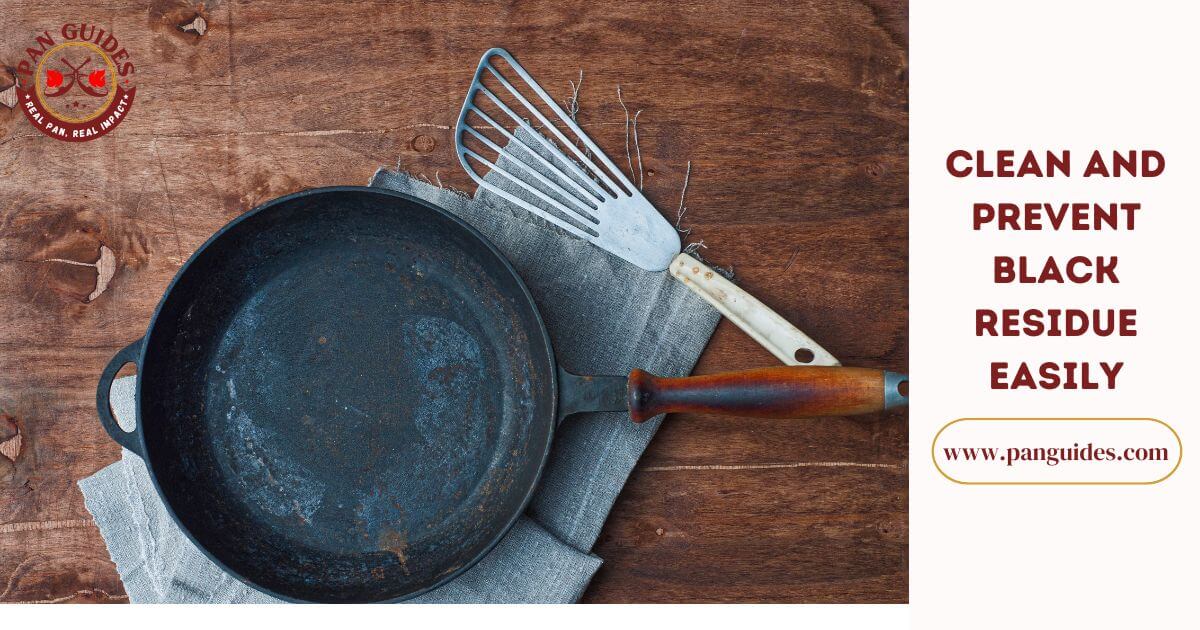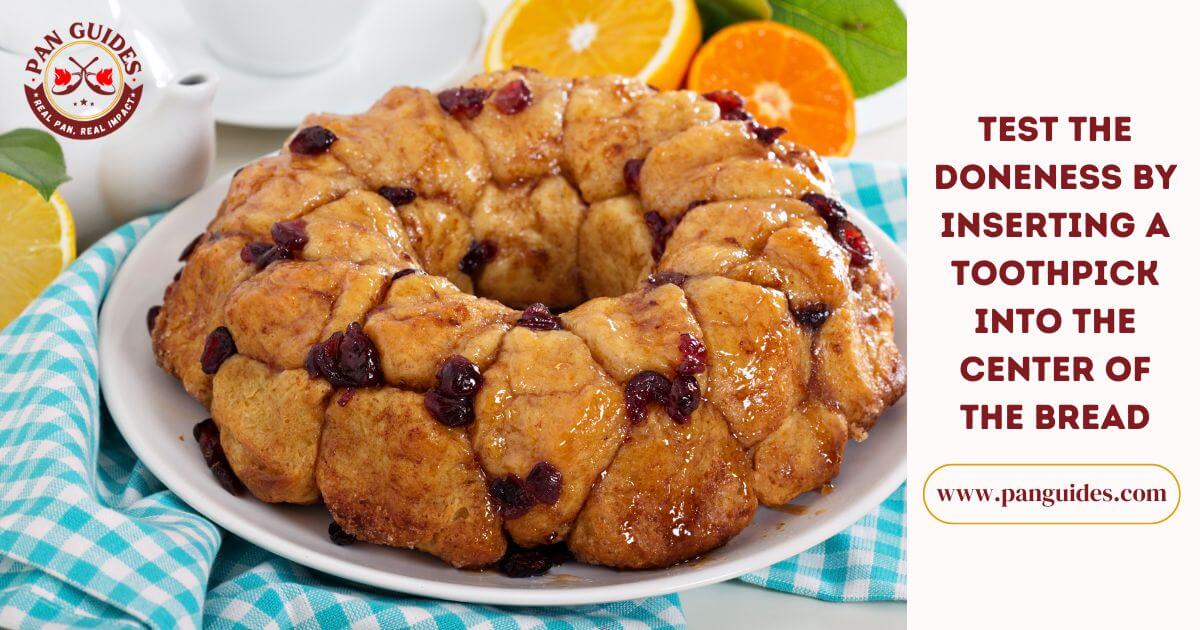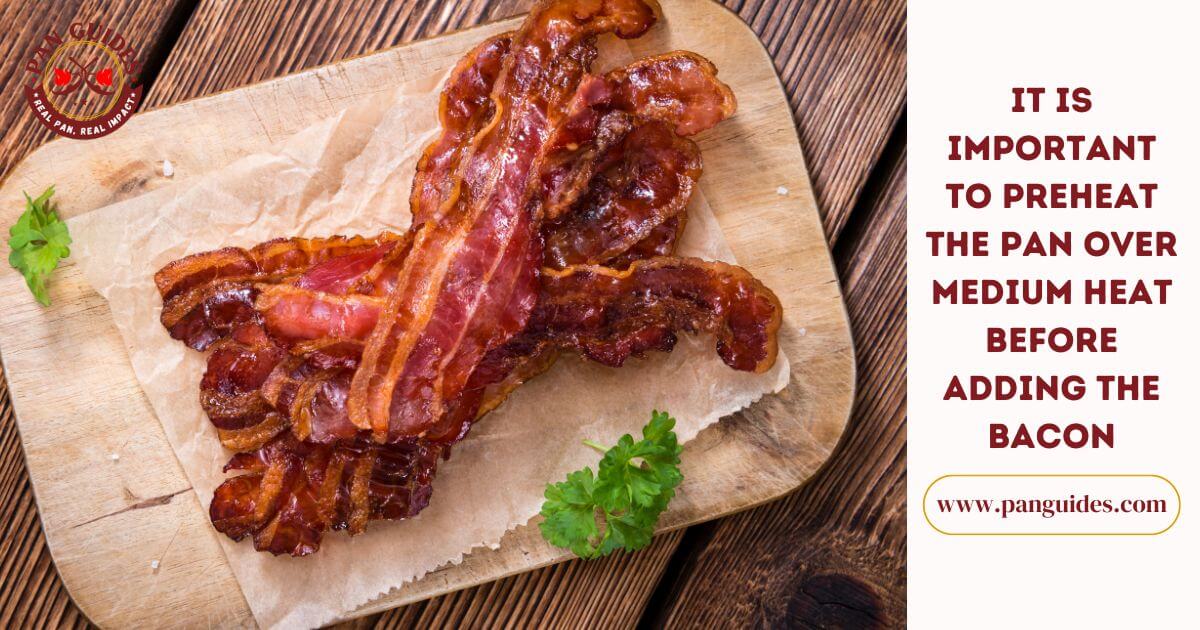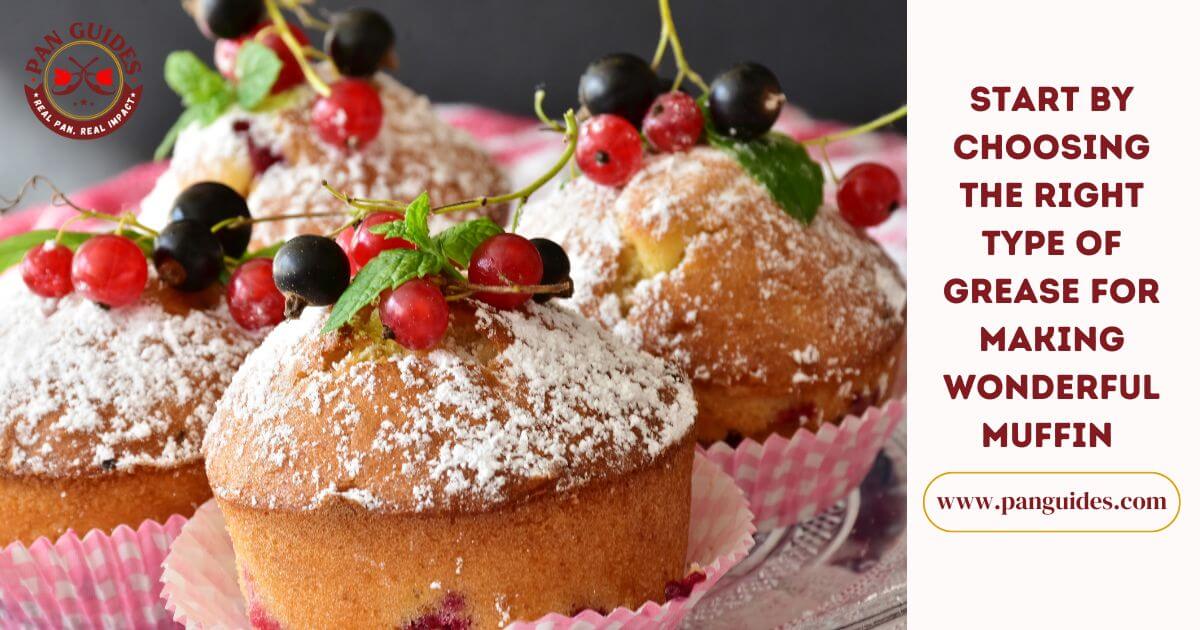So, in my long-standing chef experience, I’ve heard many people saying, why does my cast iron pan have black residue? The answer is pretty simple – if your pan isn’t properly seasoned, it will start to build up this black residue.
Cast iron skillets are a staple in many homes. They are versatile, durable, and can last for many years.
However, there is one question that people always ask me: is black residue on cast iron skillet harmful? As a master chef, I’ve explained it to them every time; but now I’m writing this blog to help you understand the issue.
Let’s find out more about it!
Are You Familiar With Cast Iron Pan’s Black Coating?
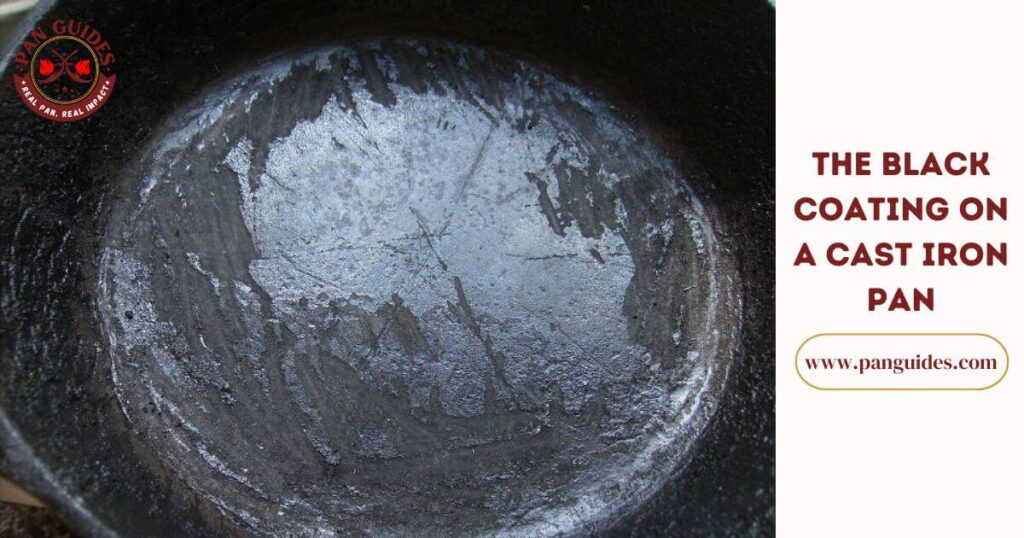
Cast iron pans are one of the most popular cookware items in the world. They are versatile, durable, and easy to care for. However, Cast Iron pans can be susceptible to corrosion like all cookware.
The smoke point is an essential consideration when cooking with oil. Because cast iron turns food black.
When heated at a high temperature, oils with a low smoke point will carbonize, allowing residue from the pan’s pores to contaminate your meal. Burnt tastes and an unappealing meal are the likely results of this practice. Choose an oil with an elevated smoke point to prevent this issue.
Why Does My Cast Iron Pan Have Black Residue?
Cast iron cookware is a versatile and durable type of cooking equipment. However, cast iron can occasionally develop black flakes from a pan on the stick surface. As cast iron turns food black. And you will see, black coming off cast iron.
This residue is caused by the presence of iron oxides, which are produced when the metal is heated. The oxides can form a hard crust on the pan’s surface, causing it to be difficult to clean.
Let’s talk about some reasons for black residue on the cast iron pan.
In The Form of Carbon Footprints
You may see black coating coming off cast iron skillet. Don’t worry about those little black particles in your meal. They’re harmless. Most likely, they are carbon deposits. Again, excess heating of fats or oils is the cause of this.
Cooking using an oil with a lower smoke point may cause the oil to become black and leave residue on your meal if you use it at high heat. As a result, your meal may end up with an unpleasant burned taste or coarse and grittily.
Adding this residue to your meal might cause it to taste bitter and raise the risk of foodborne disease. Therefore, before adding food to low-smoke-point cooking oil, it is advisable to use a different cooking technique or heat the oil a little.
Unappealing to look at yet harmless to your health at such a little dose.
Pieces of Burned Meals Particles
Cookware made of cast iron, such as skillets, is among the most popular and widely used. You may use them for cooking everything from steak to stir-frying.
There is a drawback to cast iron, though, because it is difficult to remove the seasoning when cleaning it. As a result, the food particles might burn and leave behind a black residue when cooked.
In other words, your recent dinner may have some charred particles of old charred food, which might explain the specks you’re seeing. Ensure that you thoroughly clean cast iron by using the items listed below.
Scraper Cookware on a Brand-New Pan
To prevent the black stuff coming off cast iron pan, your new skillet may have been pre-seasoned by the manufacturer. Once you’ve cooked a few meals using this spice, it may start to flake.
- To keep the Brandani cast iron skillet black residue from rusting, new cast iron skillets are generally coated with wax or oil before they are used.
- High heat, on the other hand, might gradually degrade the wax or oil covering, leaving a black residue on the pan. In addition to the potential for creating a hazard, this may also be difficult to remove.
- Your skillet should be replaced if something occurs to it like black residue cast iron can cause much rust. And that can lead to ruin the pan.
Is The Black Residue On A Cast Iron Skillet Unsafe?
The black particles you observe in your meals are not hazardous. Instead, they are almost certainly carbon deposits. The warming of fats or oils causes this.
Utilizing a small smoke point fat causes carbonization at high temperatures, causing debris from the openings of your pan to wear off towards your meal.
The black stuff coming off cast iron skillet is not hazardous; it is just a byproduct of utilizing a cast iron pan. Plus, the black speck’s seasoning layer should not readily rub off or harm the meal and produce a good nonstick cooking surface.
Nevertheless, if residue accumulates, it might interfere with your cooking.
How to Get Rid Of Black Residue on Cast Iron Pan
How to clean black residue off cast iron skillet? Cast iron is a well-loved cooking tool, but it can also be a nightmare to clean. I will show you how to easily eliminate black residue from a cast-iron skillet.
Salt Is a Great Tool
- Bring one or two cups of liquid to boil in your skillet. Remove the boiling water after 2 to 5 minutes. Boiling water can assist release the residue that has become lodged.
- The cast iron should be dried off with a paper towel or clean dishrag. The iron is still very hot, so be cautious about touching it.
- Add a quarter to a partial mug of salt after completely drying. Use a paper towel or dishrag to massage the salt into the iron cast’s surface before drying it. A discolored salt indicates about the deposit is starting to peel off.
- Then, use warm water to rinse the pan. Repeat the process if there are still deposits that need to be removed.
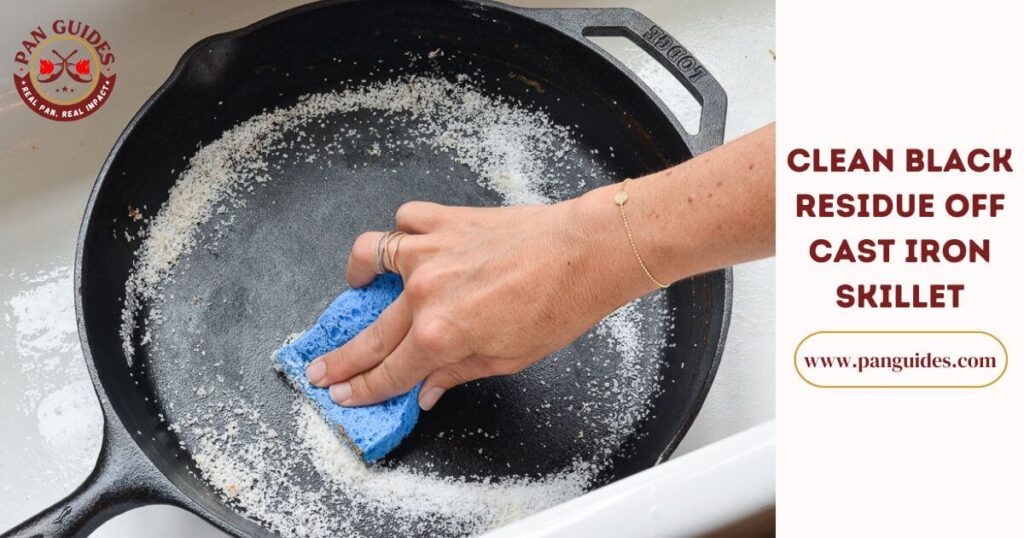
Method of Brushing
How do you clean an old cast iron skillet that has burnt-on buildup? You may clean the cast iron with the salt m or on its own. In the similar method that salt is used, this technique works.
You may remove the layer of buildup residue by brushing a rough object beside the cast iron. Cast-iron skillets may be cleaned with the use of a specific brush.
- Add 1-2 glasses of water when cast iron has boiled. Allow the mixture to seethe for two to five minutes before turning off the excess heat.
- Scrub the black debris with the brush even though the liquid is still in the pot. You may utilize a minor quantity of dishwashing soap to assist break down oils and dirt if it doesn’t come off.
- The patina or seasoning on your iron skillet may be ruined if you use soap to clean it. It’s important to re-season your pot after cleaning out the carbon steel pan black residue with a bar of soap or soapy water, so exercise caution.
- Rinse cast iron once you’ve finished cleaning it.
- Afterward, use a paper towel or dishrag to wipe it off from the skillet and let it to arid. Finish by applying oil when it has dried.
You can even search with cast iron black residue when wiped on Reddit, to have a better understanding. Now you know how to remove black residue from cast iron.
Immediately After Using Your Skillet, Wash It.
Make a habit of wiping out the cast iron skillet after each use to prevent the buildup of cast iron skillet black residue.
Most of the debris originated from the food and grease cooled in the cast iron after cooking. Cast iron skillets don’t have a chance to settle in grease if you clean them right after cooking.
For cast iron skillets, seasoning is a must.
A rusted skillet results from extended contact with hot water since the pan is made of iron. Season skillets with a thin layer of oil to prevent warm water from seeping into the pan’s interior.
Patina is the name given to this black layer of grease. The patina may be restored by heating the skillet and allowing the oil to sink into the iron. Seasoning cast iron without oven is an excellent technique to extend the life of your cookware.
Preventing the Formation of Black Residue on Cast Iron
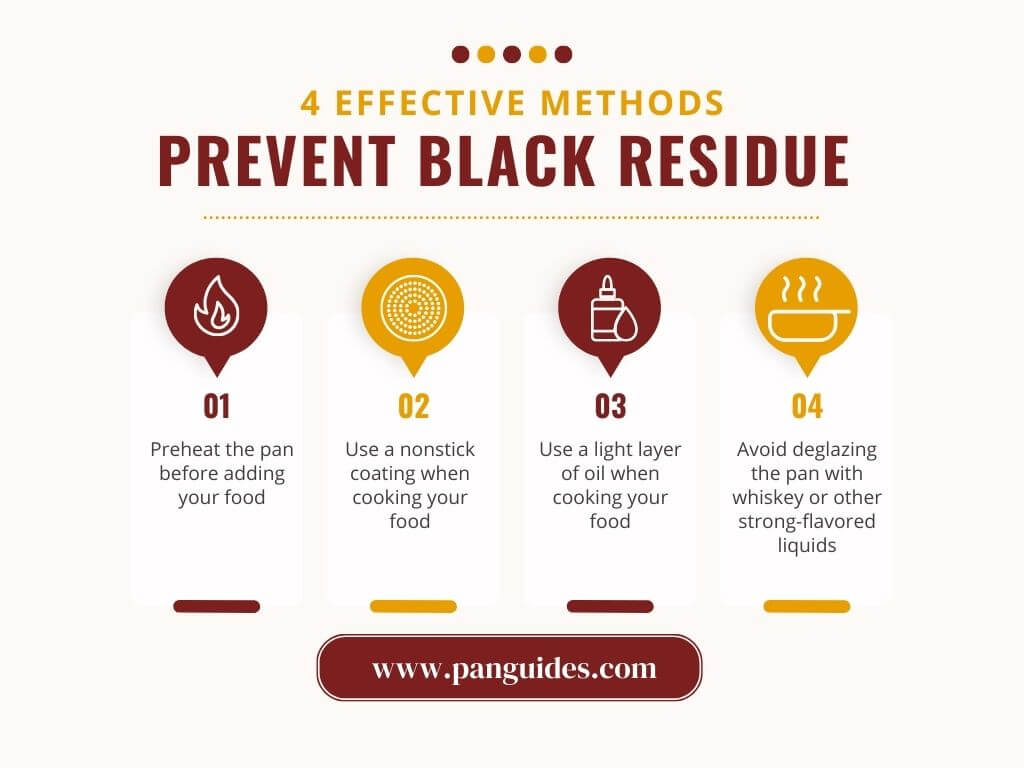
You might be wondering, why does my cast iron pan have black residue! Yes, no worries! you can prevent it!
Cast iron is a great material for cooking, but it can leave a black residue on the pan after use. Here are four tips to help prevent this from happening.
- Preheat the pan before adding your food: Cast iron skillets are a classic cooking tool and can last a lifetime with proper care. One tip for keeping your skillet looking new is to preheat it before adding your food to avoid any black residue on the pan.
- Use a nonstick coating when cooking your food: Cast iron skillets are prized for cooking food evenly and slowly, but they can be delicate. If you don’t want the black residue that can form on a cast iron skillet when you cook, use a non-stick coating. The non-stick finish of cast iron comes from baking on oils. Fat or oils are applied to the cast iron skillet and then baked at 400F in the oven to create non-stick surfaces.
- Use a light layer of oil when cooking your food: Cast iron cookware is a popular choice for those who love the taste and texture of their food. Cast iron is nonstick and absorbs less oil than other cookware options. However, if you cook with a light layer of oil on a cast iron skillet, you can prevent black residue from forming on the surface. This will keep your skillet looking new and shiny.
- Avoid deglazing the pan with whiskey or other strong-flavored liquids: When cooking on cast iron, you don’t want any black residue on the pan. That’s why it’s important to deglaze the pan with a mild-flavored liquid before adding your food.
What Is The Finest Method To Get Rid Of Rust From A Cast Iron Pan?
You can easily remove cast iron skillet brown residue from a cast-iron pan using steel wool and some elbow grease. Jeff Rogers, on the other hand, gives the following advice for eliminating severe rust:
To get started, gather the following:
- An aluminum pan
- More than a gallon of white vinegar
- Rubber gloves provide hand protection.
- A brush with a hard bristle
Prepare a vinegar-and-water solution and use it to soak each piece of rusted cast iron.
After 30 minutes to an hour, brush each item to determine whether the rust has come off. Do not be fooled into thinking that soaking the skillet for 10 hours is ten times better than one hour.
You don’t want to overdo it with vinegar, I often say. When the rust is gone, it will begin devouring iron.
Rinse the skillet well after cleaning it to remove any remaining rust. Re-season the skillet when it has been well dried. Protect your sink by soaking and washing cast iron in a biodegradable aluminum pan.
This method will work even if you are wondering how to remove old sticky grease from a cast iron skillet!
Rough Cast Iron Skillets Need To Be Sanded, Polished, and Resurfaced
Gathering the supplies and equipment, you’ll need is the first step in every project.
At a minimum, you’ll need the following to polish and resurface cast iron:
If you remove numerous layers of iron, you’ll need 40-grit sandpaper that is as coarse as possible. The sanding process will take much longer and consume much more sandpaper if you start with too fine sandpaper.
You’ll want to use this grit after applying 40-grit sandpaper to smooth the surface.
Acidic white vinegar may be used to remove any seasoning or other particles that may have been left behind after sanding.
After removing the old seasoning and polishing the iron, you’ll need to add a new coat of seasoning. Flaxseed oil or sunflower oil, if available, should be used as the initial layer of seasoning since it is vital.
Taking Care of a Cast Iron Skillet
Cast iron skillets come in all shapes and sizes, from those that are small enough to fit in a single hand to those that can accommodate two or three people. Regardless of their size, all cast iron skillets need the same basic care:
- Keep them pre-seasoned and oiled
- And avoid using metal utensils on them.
- Don’t overheat or use them on high heat, as this can damage the skillet’s finish.
- Preheat the skillet before using it. This will help prevent sticking and make sure the pan heats evenly.
- Store the skillet in a dry place when not in use. Moisture will cause rusting and corrosion.
Final Thoughts
It is vital to consider that not all cast iron pans are created equal.
As with any other type of cookware, there are a few things you need to know to get the most out of a cast iron pan.
By following the tips I have outlined in this article, you should be able to keep the cast iron pan in great condition. So, now you don’t have to ask next time “Why does my cast iron pan have black residue?”
Frequently Asked Questions
How do I get the black residue off my cast iron skillet?
Remove stuck-on food by scrubbing the pan with a kosher salt and water mixture. After that, you
may rinse or use a paper towel to dry the dish.
Why is the black coating coming off my iron skillet?
In all likelihood, they’re carbon sulfide crystals. Excessive heating of fats or oils is the cause of
this. At high heat, low smoke point oils will carbonize and transfer debris from the pores of the
pan onto your meal.
How do I get the black stuff off my burnt pan?
Start heating vinegar in a saucepan for around five minutes to get the finest results. Add roughly
two teaspoons of baking soda to the saucepan once it has been removed from heat. The fizzing of
the fluid will release the burnt food particles stuck to the pan’s bottom.
How do I know if my cast iron skillet is ruined?
Observations in four areas an old cast iron pan needs to go to goodwill.
It’s a broken piece.
You can see through the hole from it.
It’s bent or shaky.
It’s caked with sand and grime.
How do I get the black stuff off my burnt pan?
Fill your pan halfway with water and the other half with vinegar. In a pot, combine all
ingredients and bring to a boil. Watch it froth up as you add 2 heaping tablespoons of baking
soda.
After 10 minutes, repeat if necessary, adding baking soda and water to a paste and waiting. Then,
as usual, use dish soap to clean the pan.
Can you ruin a cast iron skillet?
Cast iron skillet can be ruined if you do not take proper care of it. Regular maintenance can keep
it top notch.
Why does the bottom of the pan turn black?
Unfinished combustion, produced by a lack of oxygen, results in the blackened residue left
behind on your cooking pans.
What is the best oil to season cast iron?
For seasoning cast iron, Lodge suggests using vegetable oil, melted shortening, or canola oil, like
our Seasoning Spray, because of their availability, cost, efficacy, and high smoke point.
If you are concerned about a lot of smoking happening in your pan, then you can look at my other article to solve the issue. Best of luck with your cooking!

